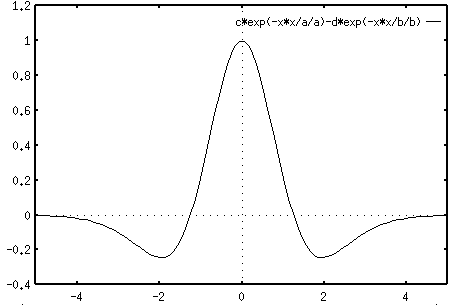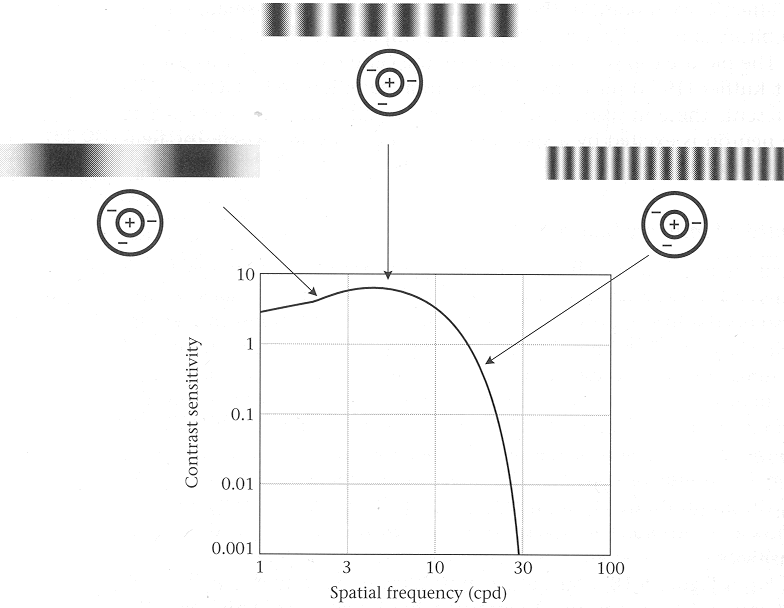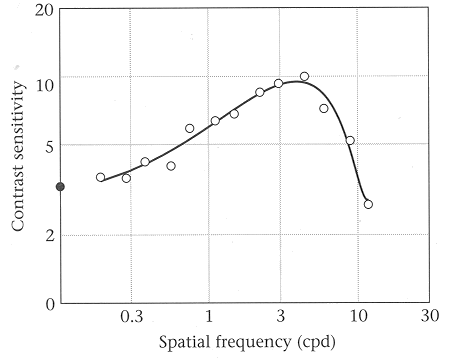![\begin{displaymath}f(x,y)=k_c\mbox{ }exp[-\frac{x^2+y^2}{\sigma_c^2}]
-k_s\mbox{ }exp[-\frac{x^2+y^2}{\sigma_s^2}]
\end{displaymath}](img55.gif)
Based on the spatial model of the RF
![\begin{displaymath}f(x,y)=k_c\mbox{ }exp[-\frac{x^2+y^2}{\sigma_c^2}]
-k_s\mbox{ }exp[-\frac{x^2+y^2}{\sigma_s^2}]
\end{displaymath}](img55.gif)
![\begin{displaymath}f(x)=k_c\mbox{ }exp[-\frac{x^2}{\sigma_c^2}]
-k_s\mbox{ }exp[-\frac{x^2}{\sigma_s^2}]
\end{displaymath}](img56.gif)

The Fourier transform of this function is

From the plot of the Fourier transform of the RF function we see that the cell will respond most strongly to gratings of a certain optimal frequency, but poorly to gratings of either higher or lower frequencies. In other words, the cell will behave like a band-pass filter. This can be explained in the following figure:

Note that the contributions from the center and surround of the RF cancel each other to cause a weak response when the spatial frequency is either too low or too high, but they add up cause a strong response when the frequency is about optimal.
This filtering effect of the RF is confirmed by physiological studies, such as the frequency response of a monkey LGN cell by Derrington and Lennie (1984), as shown in this figure:
 (In the two figures above, kc=2, ks=1,
(In the two figures above, kc=2, ks=1,
![]() ,
,
![]() .)
.)